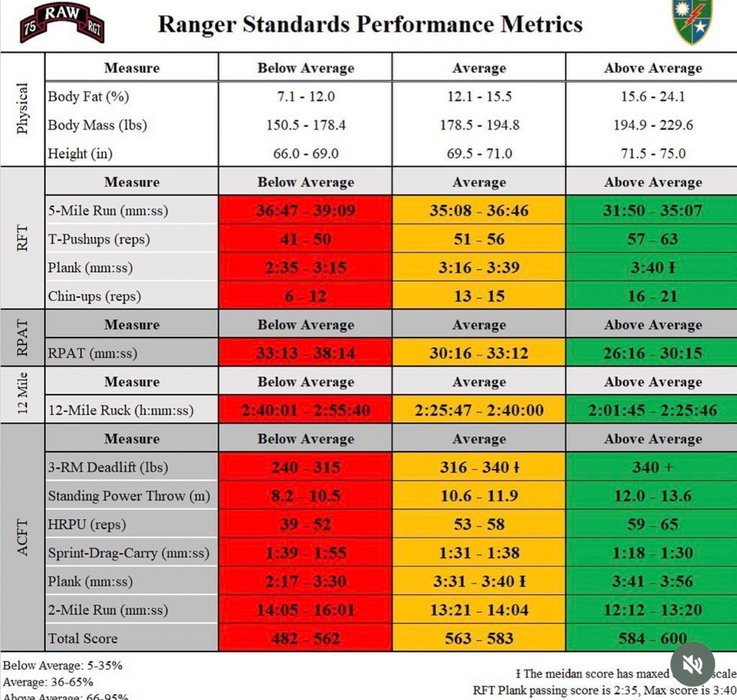

To close out my rant on people who think traditional lifting isn’t “functional” or doesn’t help augment athleticism… Your AVERAGE Ranger is around 5’10, 185lbs, 12-15% body fat, as well as other stats in the picture below like a 315-340lbs 3 rep max deadlift This is a pretty muscular person compared to the average man. I use Rangers as my example because in terms of athleticism or “functionality” we had to be decent at a ton of different aspects of fitness—essentially the ideal for what people say when they talk about “functionality” A lot of what we do to achieve & maintain that level is “bro/bodybuilder lifts” & even using *gasp* things like machines. Tbh at my peak I wasn’t even doing dynamic stuff like Olympics lifts… I was literally just lifting like I do now with a few runs, sprints, a ruck every couple weeks, & plate carrier/weighted runs usually on an obstacle course for some more “compact specific” training (SAID Principle, this is the most important concept) 2nd pic is me after RASP (Ranger Assessment & Selection Program), so pretty prime shape & while half my size now, way bigger than the majority of guys and was a top 10% performer so it didn’t hurt, but rather helped my performance. You’d be amazed at the sheer number of guys that did pretty much the exact same, the vast majority. There is no secret “functional training” methodology that so many think there is.




